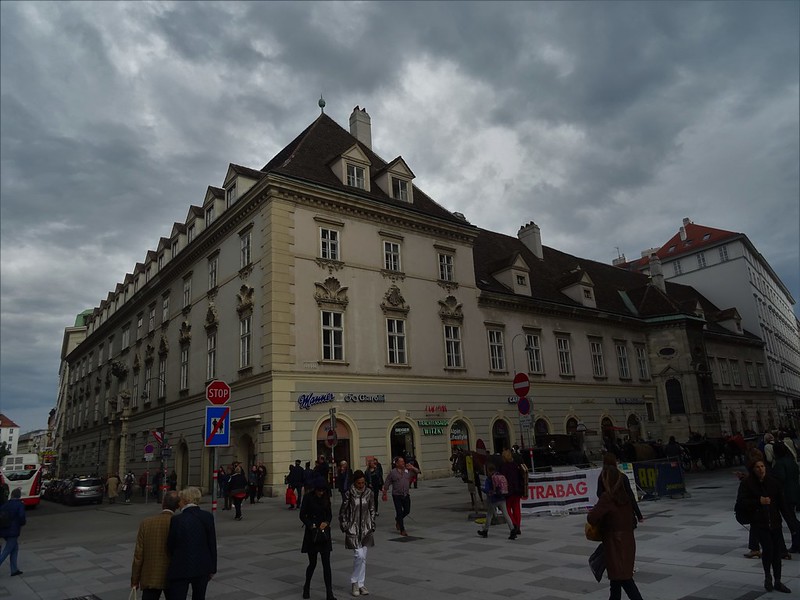Archbishop's Palace
Inner courtyard. The from 1469, the establishment of the Diocese of Vienna by Emperor Frederick III, up to the elevation to the archbishopric in 1723 called Bischofshof (Bishop's court) Palace dates back to the since 1276 documentarily mentioned rectory of St. Stephen. The later Probsthof called building served in 1458 the Viennese citizens as a meeting place, as they swore loyalty to Emperor Frederick IV. 1579 the then Bishop Caspar Neubeck proceeded to enlarge and embellish the house. However, it was completely destroyed in a fire in the year 1627. The present building was built from 1632 to 1641 under Bishop Anton Wolfrath and his successor Philip Graf Breuner on a design by Giovanni Coccapani. This is indicated by the year date 1641 at the courtyard side library wing. The old defense tower, which stood till 1640 on the corner to the woolen line (Wollzeile), was demolished and used its place to increase the bishop's palace. Emperor Ferdinand II contributed to the construction costs with 100,000 thalers. 1723 Bishop Siegmund Graf Kollonitsch was appointed Prince-Archbishop. The Bishop's palace became Archbishop's palace. The top floor of the Red Tower Road (Rotenturmstraße) tract was not until the end of the 19th Century placed. Simultaneously, were opened the arches in the front to Stephansplatz for the construction of business premises. The palace houses the residence of the Cardinal, administrative authorities of the Diocese of Vienna as well as in the former residence of the provost the in 1933 founded Cathedral and Diocesan Museum, which was housed until 1973 in the actual palace.
The expanded building has each a facade to cathedral square (Stephansplatz), the Rotenturmstraße and the Wollzeile. At the two storey wing to Stephansplatz the original Gothic, but early baroque renewed chancel of the 1638 converted and newly consecrated Andrew's Chapel protrudes, going back to a since 1271 documented previous building (Achaziuskapelle - chapel). Its tower at the end of the 18th Century was removed. The interior of the chapel is decorated with rich stucco decorations. As main altar serves the beautifully crafted Renaissance pauper's altar from the Augustinian church. Bishop Kollonitsch 1716 the originally unadorned, dreizehnachsige (thirteen-axis) facade at the Rotenturmstraße through the lush stucco decoration with shell motifs on the windows of the main floor had enriched. Above the by banded columns flanked main portal the Kollonitsch coat of arms with the archbishop's hat after 1723 was attached. The current entrance is located at the front side in the Wollzeile. The large arcaded courtyard is bisected by the library wing. At its west side is a monumental, with statues decorated wall fountain from the 17th Century set in. The baroque stone balustrades of the staircase are decorated with cherubs. This is followed by the reception rooms. Their stucco ceilings were created around 1716. The in the 19th Century furnished library room contains many old books from different fields of knowledge, the archive interesting documents from five centuries.
Location/Address: 1010 Vienna, Rotenturmstraße 2
Viewing: The building can usually not be visited.
Other: In the party rooms but occasionally take place concerts and events.
www.burgen-austria.com/archive.php?id=36 
